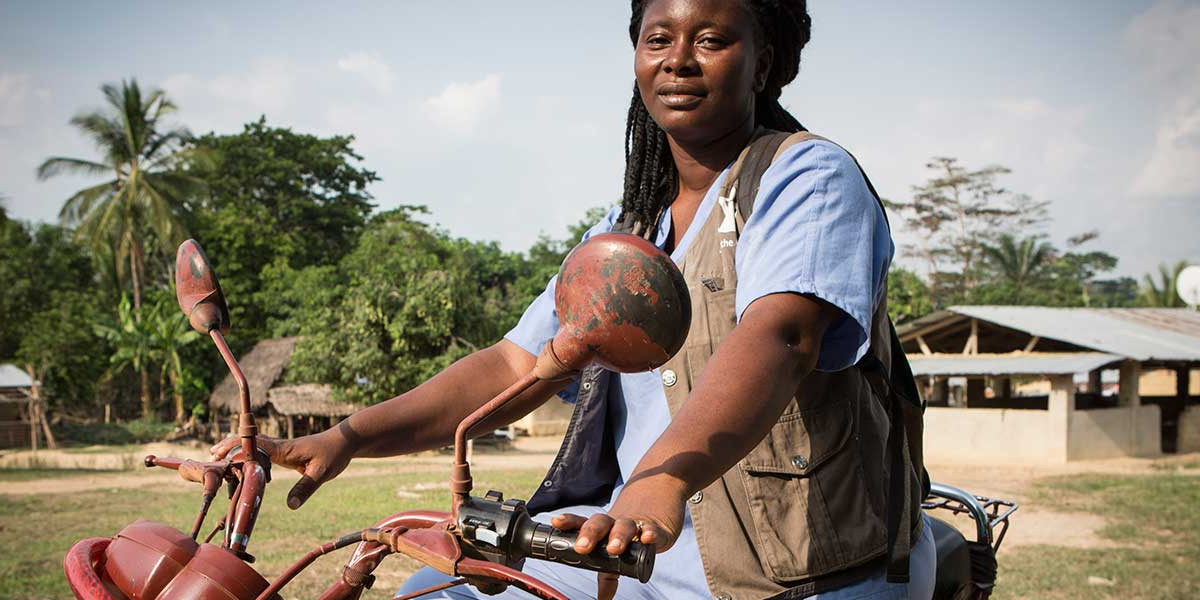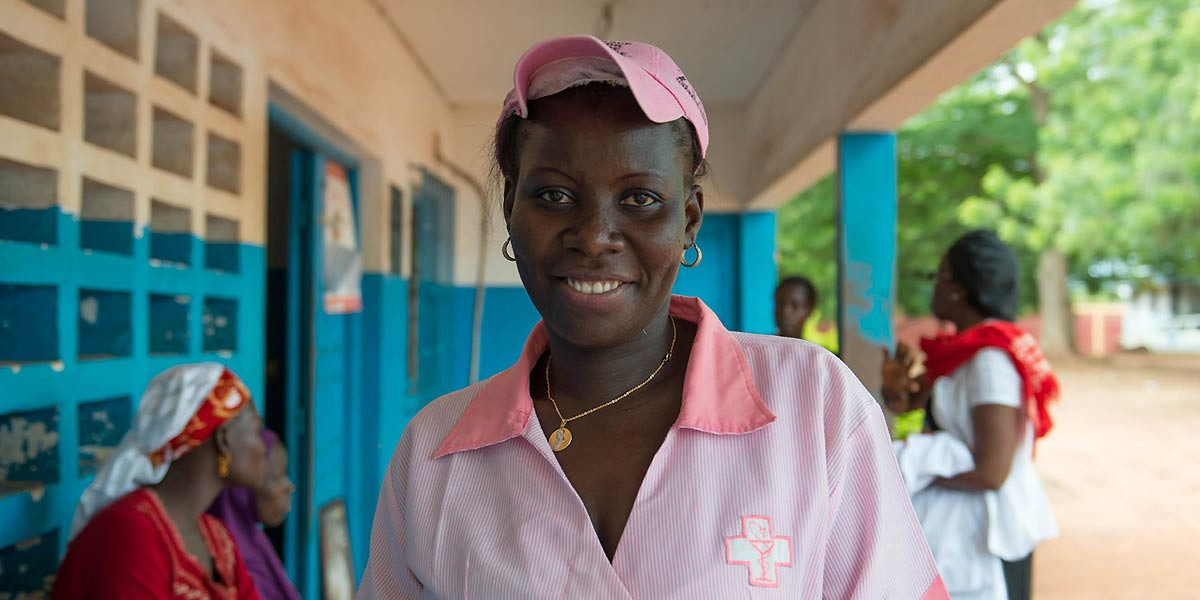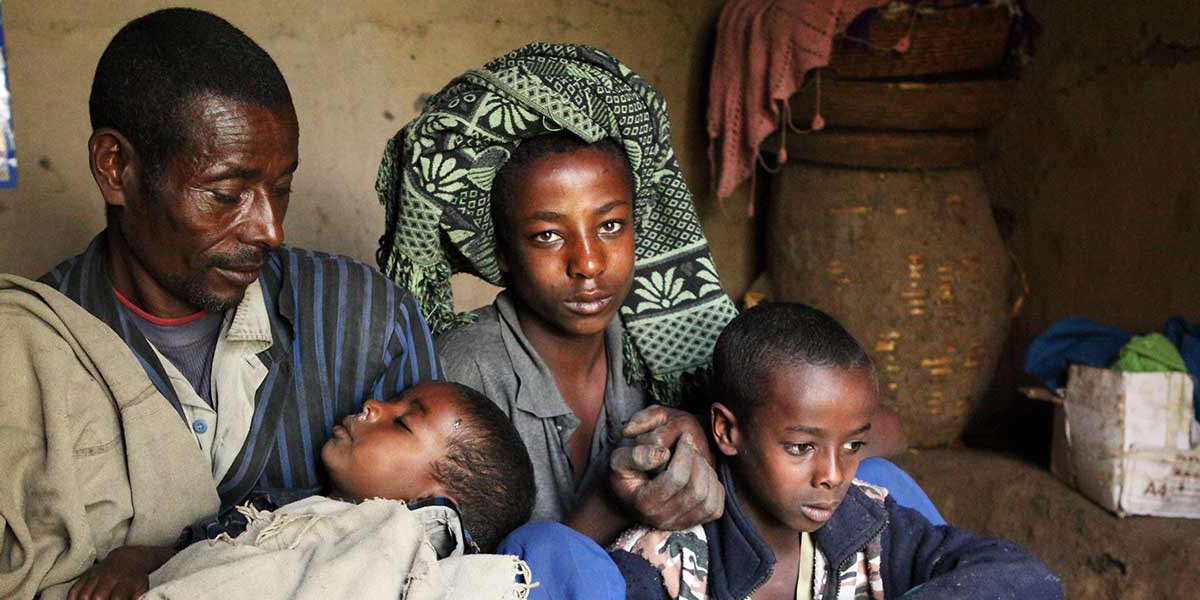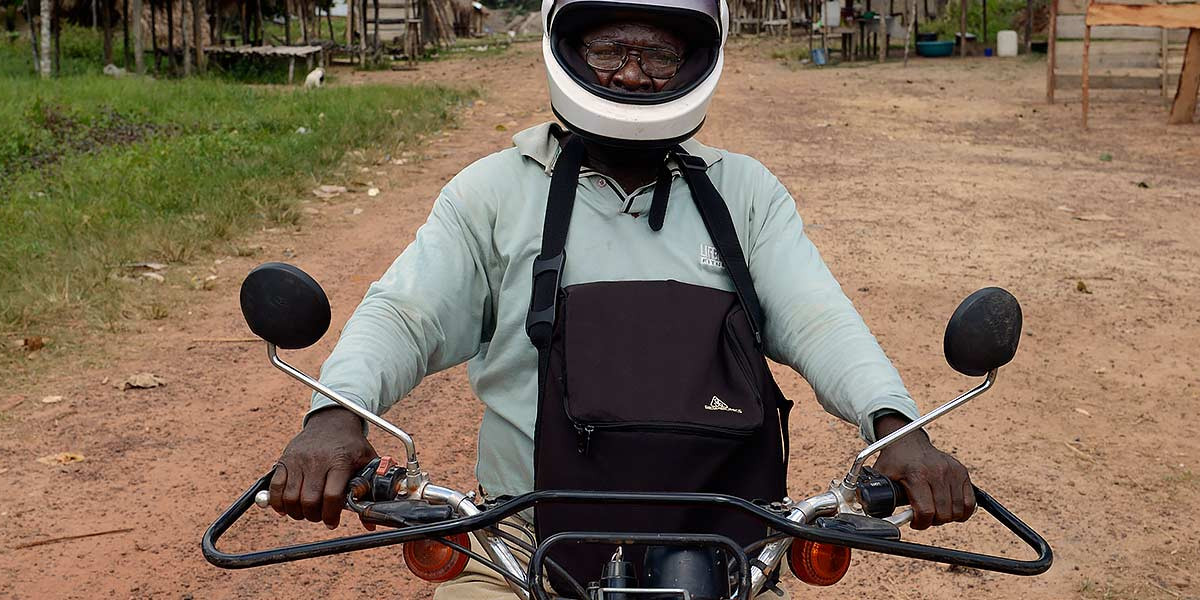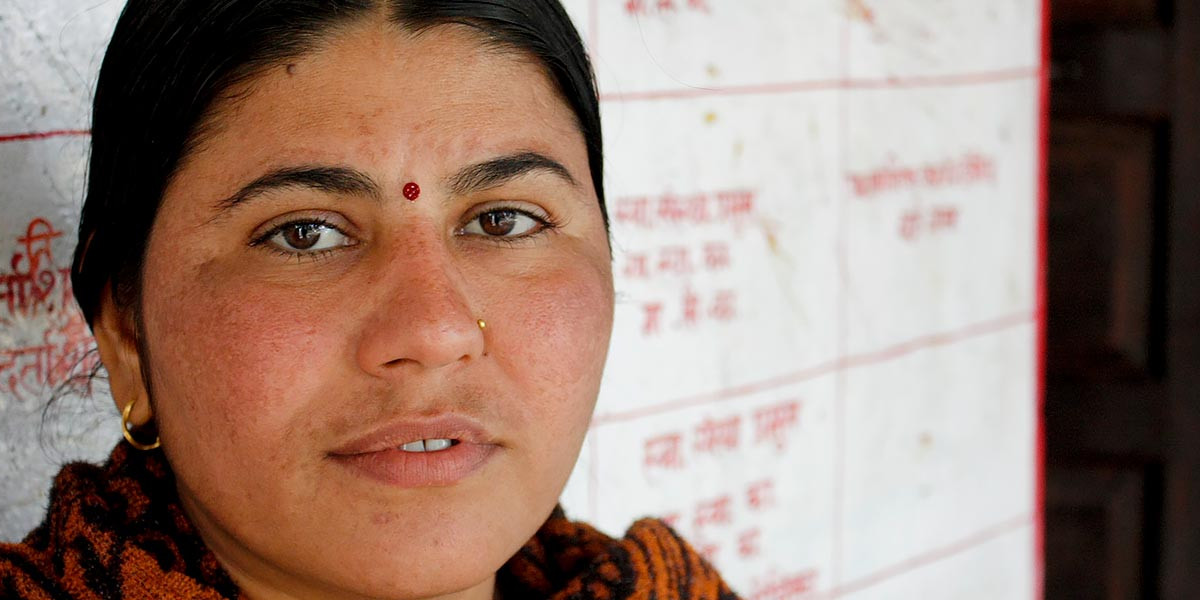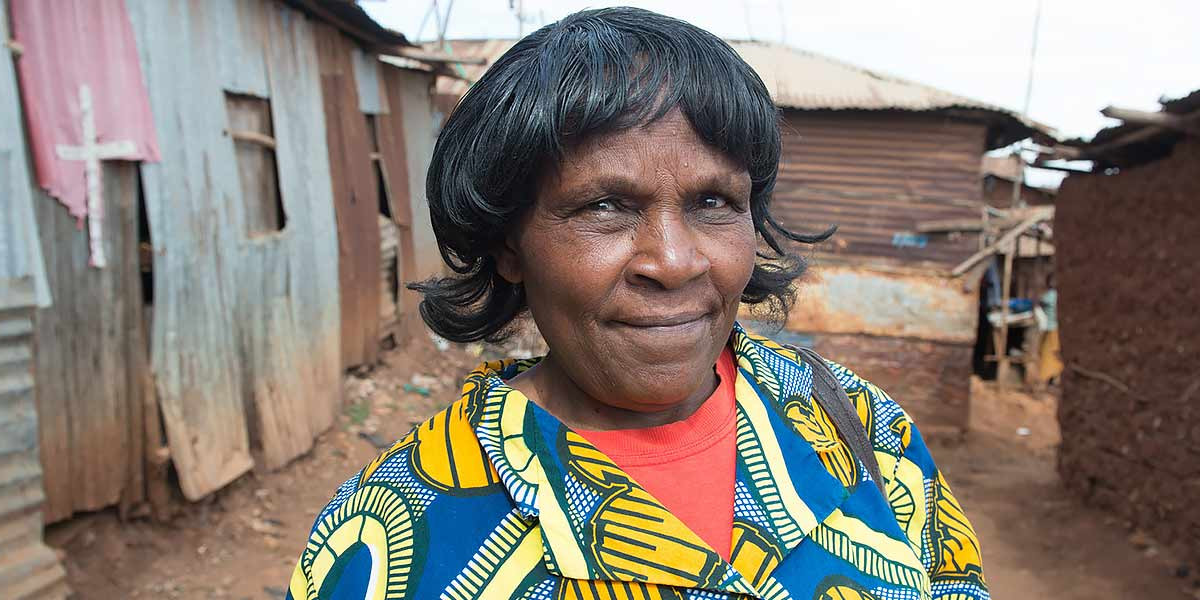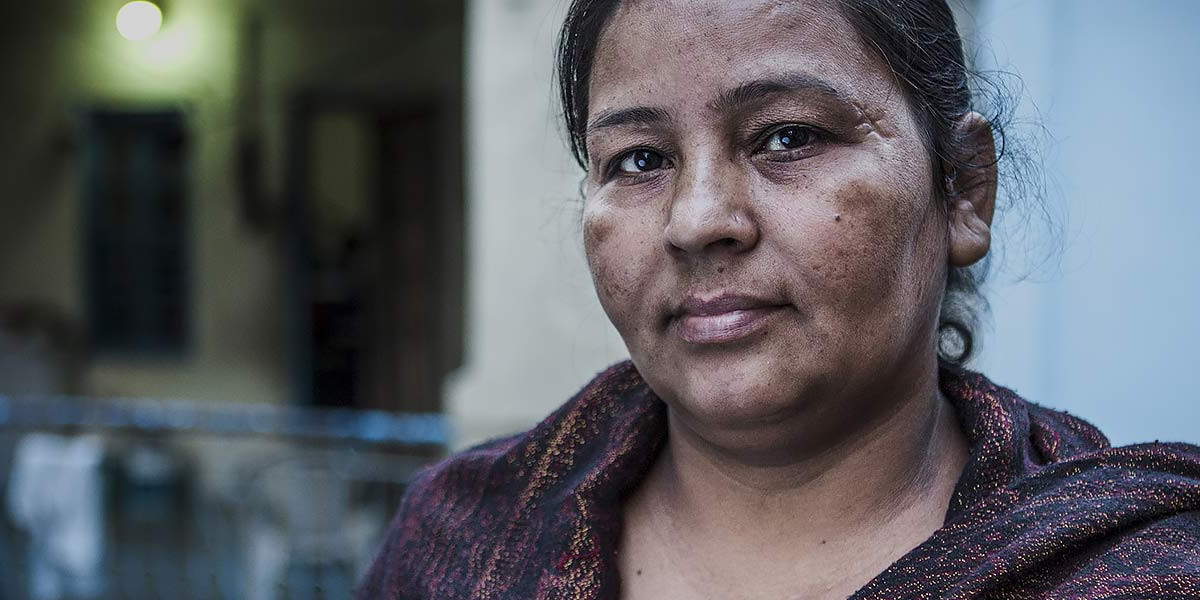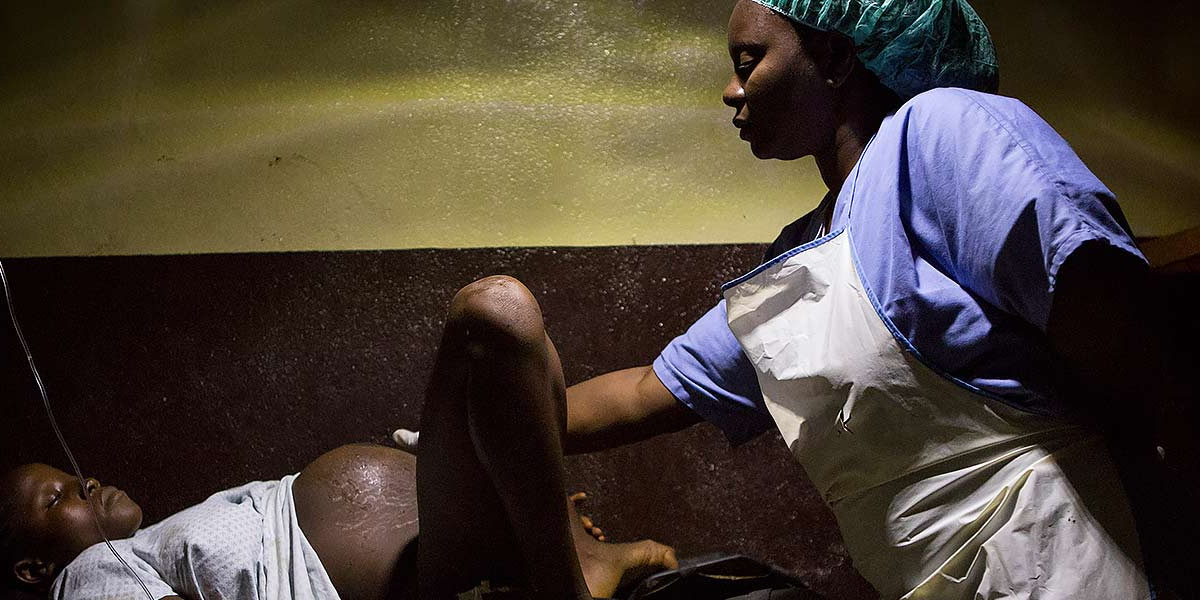Every day, 15,000 children under five die from preventable causes.
Child survival remains a significant global challenge. Although remarkable progress has been made in recent decades to reduce the number of child deaths worldwide, we have failed to reach the ones who need it most – the poorest, the disadvantaged and the vulnerable. In sub-Saharan Africa, children are 15 times more likely to die before the age of five than children who live elsewhere.
Surviving birth
The most dangerous day in a child’s life is the day they are born.
A child’s chance of survival reflects a country’s social and economic development. Mortality rates reflect children’s access to basic health interventions such as vaccinations, medical treatment and adequate nutrition.
Children are dying from entirely preventable and treatable causes, such as pneumonia, diarrhoea, malnutrition and birth asphyxia. Basic and cost - effective care, such as breastfeeding support, adequate warmth, and medicine could change that.
1 Save the Children Australia (2014) “New report on newborn deaths”
Missing midwives
One in three women around the world gives birth without the help of anybody who has been trained to help – and 2 million give birth entirely alone. 2
Giving birth without a midwife or skilled birth attendant puts women and their babies at a much higher risk of death from one of the many serious complications that can happen during childbirth.
Midwives can reduce the number of deaths in childbirth, but there aren’t enough of them.
There are profound inequalities in the access to and use of reproductive health services within and across regions.
- Globally, there was an estimated 289,000 maternal deaths in 2013, which is equivalent to about 800 women dying each day. 3
- Almost all of these women – 99 per cent – live and die in developing countries. 4 More than half of these deaths occur in sub-Saharan Africa and almost one third occur in South Asia. 5
The world needs more midwives. Without them, women and new-born babies will continue to die from easily preventable complications. Every year, more than one million children are left motherless and vulnerable because of maternal death.
A key strategy for reducing maternal mortality is ensuring that every birth occurs with the assistance of a skilled health worker – meaning a doctor, nurse or midwife. Health workers bring vital basic health services to the poorest and most marginalised children, saving lives every day. Yet, the world currently faces a gap of at least 7.2 million professional health care workers, whose services are desperately needed.
2 Save the Children (2011) “Missing Midwives”
3 UN (2015) “The Millennium Development Goals Report.”
4 UNFPA (2012) “Giving birth should not be a matter of life and death.”
5 WHO (2015) “Maternal mortality”
6 Save the Children (2011) “Missing Midwives”
In 2010, Save the Children committed to training 400,000 health workers by 2015. To date, we have exceeded our target, supporting the training of 494,906 health workers around the world.
Over 90 percent of deaths during childbirth could be prevented if women in developing regions had access to sufficient diets, basic literacy and health services, and safe water and sanitation facilities during pregnancy and childbirth. 7
7 UN (2015) "The Millennium Development Goals Report"
8 UNFPA (2012) “Giving birth should not be a matter of life and death.”
A well trained midwife does much more than deliver babies. A midwife working at the heart of the community and within a functioning health service is able to visit women to give care, advice and support – before, during and after pregnancy.
Many countries have invested in bicycles or motorbikes for midwives, enabling them to travel to remote communities more easily and to provide more frequent visits and support to more pregnant women.
Antenatal care by midwives can identify problems and prevent some complications, referring cases where necessary – for example, if it is a multiple pregnancy, if the baby is very small or very large, or if the baby is not in a good position for delivery.
Community health
In many countries, the job of delivering babies falls to traditional birth attendants – often older respected women in the community who help mothers to give birth. They are not certified or licensed and as a result, their level of education, training and skills, and the quality of care they provide can vary dramatically.
Opinion is divided over the role of the traditional birth attendant. Some traditional birth attendants use practices that can be harmful to a mother and her baby; for example, sitting on a woman’s belly to force the baby out, using butter to attempt to turn a baby in the wrong position, or using herbs to treat infections rather than seeking medical care.
As a result, countries have, at various times, put bans in place to prevent traditional birth attendants from practising or being trained, but community health workers can perform a life-saving role in their home villages when midwives are not available.
Training community health workers to give basic advice to pregnant women, to treat some complications, and to refer women to health facilities when there are problems can make a dramatic difference.
Family planning
Family planning can save women’s lives and safeguard their future health. It prevents unwanted pregnancies, reduces exposure to the health risks of childbirth and abortion, and gives women more time to care for themselves and their children.
Clean drinking water and sanitation
The lives of new mothers and babies are being put at risk due to a lack of safe drinking water, good hygiene and an adequate number of toilets.
Each year diarrhoea kills around 760,000 children under five, and is a leading cause of malnutrition. 9
The world met the millennium development target of halving the proportion of people without ongoing access to safe drinking water, five years ahead of schedule in 2010. While this is a remarkable achievement, much still remains to be done.
In 2015, 663 million people still lack improved drinking water sources and 2.4 billion people still lack improved sanitation facilities. 10
9 WHO (2013) “Diarrhoeal disease.”
10 WHO & UNICEF (2015) “Progress on sanitation and drinking water.”
Starving children
Every hour of every day, 300 children die because of malnutrition. It’s an underlying cause of more than a third of children’s deaths – 2.6 million every year. 11 This disproportionately affects children in the poorest countries, who are two times more likely to be chronically malnourished than children in developed countries. 12
Malnutrition erodes the potential of millions of children, by reducing the ability of the body and brain to develop properly due to a lack of nutrients. Malnutrition has resulted in 159 million children under the age of five who are affected by stunting, and 50 million who are suffering from wasting. 13
Children who suffer from wasting face the immediate risk of death, as they are simply not getting enough calories from food. Those who are affected by stunting fail to grow both physically and cognitively, which means that not only are they too short for their age - they’re also likely to enrol in school later, and do less well academically.
11 Save the Children (2012) “A life free from hunger: Tackling child malnutrition.”
12 Ibid.
13 “UNICEF(2015) "Levels and trends in child malnutrition.”
14 Save the Children (2012) “A life free from hunger: Tackling child malnutrition.”
15 Ibid.
Solution to world hunger
Interventions to prevent malnutrition can be as simple as providing vitamin A and zinc supplements, iodised salt and promoting healthy practices such as handwashing, breastfeeding and nutritious diets. Fortification (adding vitamins and minerals to food) is one of the most cost effective direct interventions.
Improving the access of nutritional food needs to be met with improved education about nutrition. The global system by which food is produced, distributed and consumed is currently failing to meet the nutritional needs of much of the world’s population. More food does not automatically mean better nutrition, our focus must be improving children’s diets so that they can access the nutrients necessary for a healthy life.
One of the main causes of malnutrition is poverty. For many families, their children become malnourished and stunted not because there is no nutritious food available, but because they cannot afford to buy it. In such cases, social protection schemes – which provide families with regular cash transfers or food parcels – have helped protect families from the worst effects of poverty.
16. Save the Children (2012) "A life free from hunger: Tackling child malnutrition."
Universal access to health
Children in the poorest countries are dying before they’ve had a chance to live because there’s no doctor or nurse, no medicine and no clinic when they’re ill, or because their mothers give birth to them alone.
Save the Children is calling for the international community to make a clear commitment to Universal Health Coverage for every country - the principle that every person should have access to essential health care, not just those that can afford it and for world leaders to commit to end preventable maternal, newborn and child deaths by 2030.

You can help
him live
Every day, 18,000 children under five die from preventable causes. Basic and cost effective care, such as breast feeding support, adequate warmth, and medicine can change that.
Donate now

